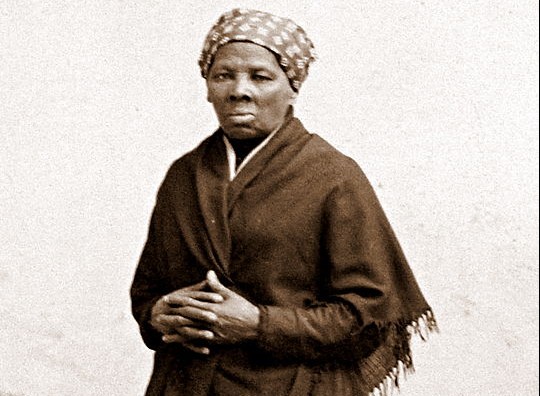Harriet Tubman will replace president (and general) Andrew Jackson as the face of the twenty dollar bill.
This is an appropriate time to remember that Tubman is commemorated in the Episcopal calendar of the church year on July 20. From the Episcopal Church glossary entry Tubman, Harriet Ross:
(c. 1821-Mar. 10, 1913). Abolitionist. She was born a slave in Dorcester County, Maryland. She was first named Araminta, but later changed her name to Harriet. Tubman was a member of the African Methodist Episcopal Zion Church. In 1849 she escaped from slavery and was a fugitive slave. Tubman became one of the leaders in the work of the Underground Railroad. She was given the name “Moses.” John Brown, the abolitionist who seized the U.S. arsenal at Harper’s Ferry, West Virginia, called her “General Tubman.” She helped more than 300 slaves to freedom as a major “conductor” of the Underground Railroad. When the Civil War broke out, she attached herself to the Union Army and worked as a cook, laundress, and nurse. Tubman also worked as a spy within the Confederate lines. After the war she lived in Auburn, New York, where she housed children and poor older people. Her story is told in Harriet the Moses of Her People (1886). The Harriet Tubman Home for indigent aged African Americans existed for a number of years after her death. Tubman died in Auburn, New York.
From the Baltimore Sun, February 20, 1995:
Dorchester County-born slave Harriet Ross Tubman was honored as a saint here yesterday in the Episcopal church where her owner had been a baptized member.
The service of song and word in the 303-year-old Great Choptank Parish would probably have amazed the 19th-century freedom fighter in her own time.
But it was extraordinary enough even in present-day Cambridge. Whites and blacks packed Christ Episcopal Church, as the parish is also known, to “re-examine the mistakes of our past,” in the words of the Rev. Linda Wheatley, one of the participants.
…
At the church’s General Convention last summer, the former slave was nominated for this honor along with three other 19th-century women who were pioneers in the anti-slavery and women’s rights movements. The others are Elizabeth Cady Stanton, Amelia Bloomer and Sojourner Truth.
While they are to be commemorated as a group July 20, the observance honoring Tubman this year in the Diocese of Easton was held yesterday so that it could be part of Black History Month.
Final approval of naming her a saint is expected at the 1997 General Convention. Tubman is the first Maryland native to be chosen for this honor.
“To be added to our Calendar of Saints is one of the highest honors our church can bestow on any individual,” said the Rev. Nathaniel W. Pierce, rector of Great Choptank Parish, who officiated at the service. “Harriet Tubman, who was not an Episcopalian, often said that she only did what the Lord told her to do, and her life bears witness to a spiritual depth rarely found in any person.”
Michael Curry was there:
The sermon by the Rev. Michael B. Curry, rector of St. James Episcopal Church on West Baltimore’s Lafayette Square, also brought an applauding congregation to its feet — an unusual occurrence for an Episcopal service. Preaching on a text from the Book of Exodus, Father Curry reminded the congregation that Harriet Tubman is remembered as “the Moses of her people” for her role in freeing slaves.
“There’s always a new Pharaoh,” Father Curry said. “He takes many disguises . . . making slaves of the children of God.”
RNS has 5 faith facts about Harriet Tubman.
Image credit

